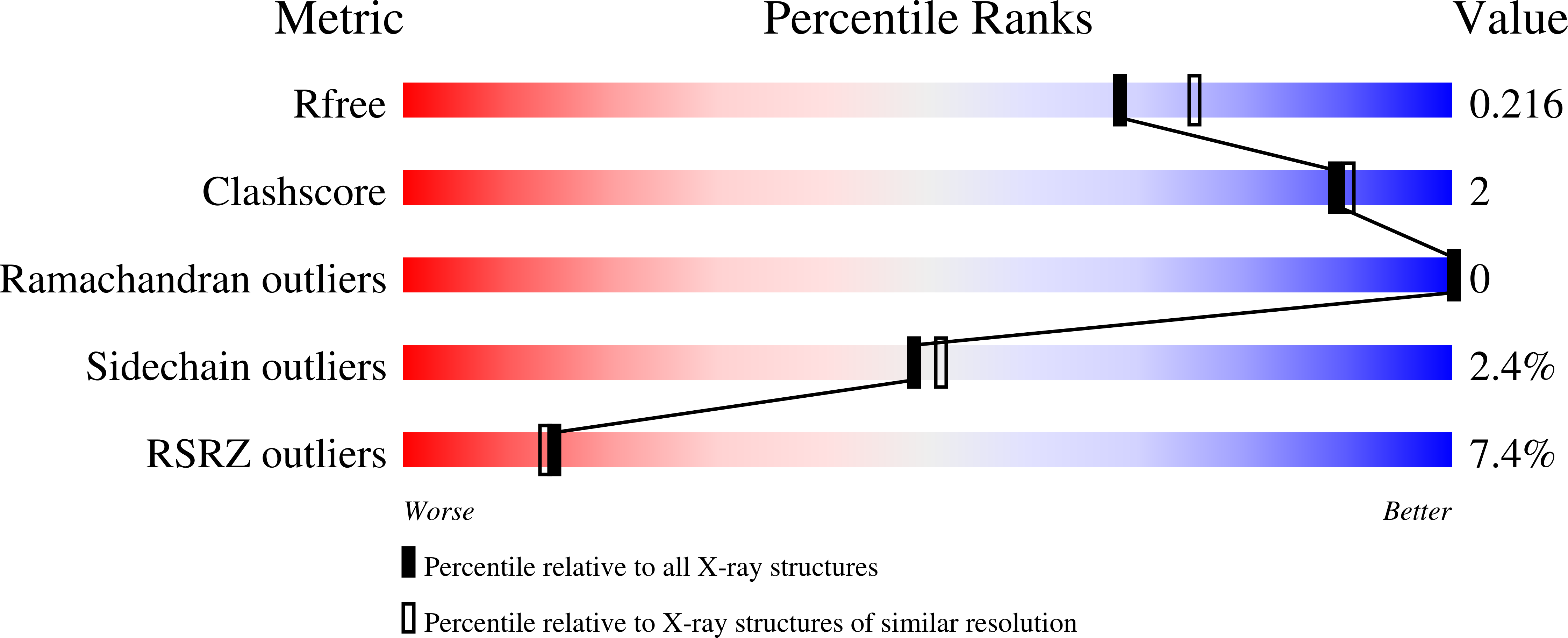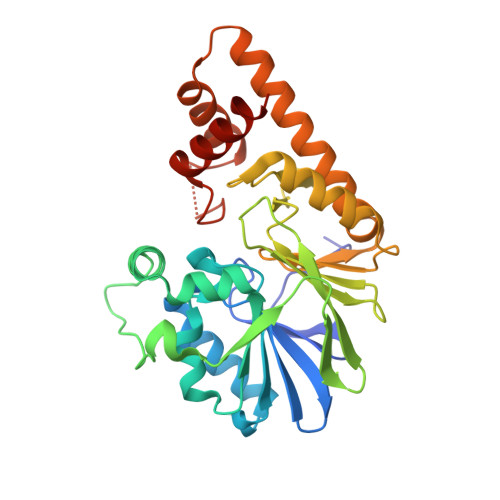The PqsE Active Site as a Target for Small Molecule Antimicrobial Agents against Pseudomonas aeruginosa.
Taylor, I.R., Jeffrey, P.D., Moustafa, D.A., Goldberg, J.B., Bassler, B.L.(2022) Biochemistry 61: 1894-1903
- PubMed: 35985643
- DOI: https://doi.org/10.1021/acs.biochem.2c00334
- Primary Citation of Related Structures:
7TZ9, 7TZA, 7U6G - PubMed Abstract:
The opportunistic pathogen Pseudomonas aeruginosa causes antibiotic-resistant, nosocomial infections in immuno-compromised individuals and is a high priority for antimicrobial development. Key to pathogenicity in P. aeruginosa are biofilm formation and virulence factor production. Both traits are controlled by the cell-to-cell communication process called quorum sensing (QS). QS involves the synthesis, release, and population-wide detection of signal molecules called autoinducers. We previously reported that the activity of the RhlR QS transcription factor depends on a protein-protein interaction with the hydrolase, PqsE, and PqsE catalytic activity is dispensable for this interaction. Nonetheless, the PqsE-RhlR interaction could be disrupted by the substitution of an active site glutamate residue with tryptophan [PqsE(E182W)]. Here, we show that disruption of the PqsE-RhlR interaction via either the E182W change or alteration of PqsE surface residues that are essential for the interaction with RhlR attenuates P. aeruginosa infection in a murine host. We use crystallography to characterize the conformational changes induced by the PqsE(E182W) substitution to define the mechanism underlying disruption of the PqsE-RhlR interaction. A loop rearrangement that repositions the E280 residue in PqsE(E182W) is responsible for the loss of interaction. We verify the implications garnered from the PqsE(E182W) structure using mutagenic, biochemical, and additional structural analyses. We present the next generation of molecules targeting the PqsE active site, including a structure of the tightest binding of these compounds, BB584, in complex with PqsE. The findings presented here provide insights into drug discovery against P. aeruginosa with PqsE as the target.
Organizational Affiliation:
Department of Molecular Biology, Princeton University, Princeton, New Jersey 08544, United States.















